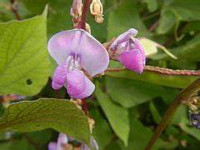Antibacterial Activity of Green Synthesized Silver Nanoparticles of Lablab purpureus Flowers Extract against Human Pathogenic Bacteria http://www.doi.org/10.26538/tjnpr/v7i8.12
Main Article Content
Abstract
There are several uses for silver nanoparticles in the field of biomedicine because of their exceptional features. The crucial use of silver nanoparticles is the development of antibiotics that are clinically effective against resistant bacteria. Due to their non-toxicity, environmental friendliness, and faster action, green syntheses of silver nanoparticles have gained some attraction. Plant extracts could be used as efficient sources of reductants and stabilizers in this process and also investigated for antibacterial action. This study mainly aimed to synthesize silver nanoparticles using Lablab purpureus flowers extracts and evaluate the antibacterial properties of
the green synthesized sliver nanoparticles. The silver nanoparticles were synthesized and characterized by uv–vis, FT-IR spectroscopy and SEM analysis. Additionally, the disk diffusion method was used to evaluate the antibacterial activity of the silver nanoparticles against one gram positive and five gram negative bacteria. The particle size of synthesized Silver nanoparticles (AgNPs) was less than 1 µm. In bacterial susceptibility study, flower extract of L. purpureus showed moderate antibacterial activity but nanoparticles showed promising antibacterial potential against gram positive S. aureus and gram negative E. coli, moderate antibacterial activity against
S. typhi bacteria, and mild activity against P. vulgaris, K. pneumonia and P. aeruginosa. This study indicates that AgNPs made from L. purpureus flower extract exhibit potent antibacterial activity, suggesting these nanoparticles may be used to develop effective anti-bacterial drugs for the treatment of bacterial infections.
Downloads
Article Details

This work is licensed under a Creative Commons Attribution-NonCommercial-NoDerivatives 4.0 International License.
References
Gershenzon J, Ullah C. Plants protect themselves from herbivores by optimizing the distribution of chemical defenses. Proceedings of Nat. Acad. Sci. 2022;119(4):e2120277119.
Ahn K. The worldwide trend of using botanical drugs and strategies for developing global drugs. BMB reports. 2017;50(3):111.
Bhattarai S, Sharma BK, Subedi N, Ranabhat S, Baral MP. Burden of Serious Bacterial Infections and MultidrugResistant Organisms in an Adult Population of Nepal: A Comparative Analysis of Minimally Invasive Tissue Sampling Informed Mortality Surveillance of Community
and Hospital Deaths. Clin. Infect. Dis. 2021;73(Supplement_5):S415-S21.
Manandhar S, Luitel S, Dahal RK. In vitro antimicrobial activity of some medicinal plants against human pathogenic bacteria. J. Trop. Med. 2019;2019.
Benzie IF, Wachtel-Galor S. Herbal medicine: biomolecular and clinical aspects. 2011.
Lim T. Lablab purpureus. Edible Medicinal And NonMedicinal Plants: Springer; 2012. p. 730-41.
Pramod C, Nair S, Harindran J. Analgesic and antioxidant effects of Lablab purpureus Linn in polyphenolic fraction and methanolic leaf extract on experimental animal model. 2020.
Dahake AP, Joshi AB, Patel KM. Antimicrobial investigation of different extracts of Dolichos lablab beans. RJPP. 2009;1(2):123-5.
Bhat SS, Shivamallu C, Prasad KS, Prasad SK. Biomedical importance of Lablab purpureus: A review. Med. Plants - Int. J. Phytomed. Relat. Ind. 2022;14(1):20
Ankamwar B, Damle C, Ahmad A, Sastry M. Biosynthesis of gold and silver nanoparticles using Emblica officinalis fruit extract, their phase transfer and transmetallation in an organic solution. JJ. Nanosci. Nanotechnol. 2005;5(10):1665-71.
Halilu EM, Ngweh VA, Airemwen CO. Green Synthesis of Silver Nanoparticles from Parinari curatellifolia Methanol Stem Bark Extract and Evaluation of Antioxidant and Antimicrobial Activities. Trop. J. Nat. Prod. Res. 2023;7(3).
Jain N, Jain P, Rajput D, Patil UK. Green synthesized plantbased silver nanoparticles: Therapeutic prospective for anticancer and antiviral activity. Micro and Nano Systems Letters. 2021;9(1):1-24.
Rautela A, Rani J. Green synthesis of silver nanoparticles from Tectona grandis seeds extract: characterization and mechanism of antimicrobial action on different microorganisms. J. Anal. Sci. Technol. 2019;10(1):1-10.
Iqbal E, Salim KA, Lim LB. Phytochemical screening, total phenolics and antioxidant activities of bark and leaf extracts of Goniothalamus velutinus (Airy Shaw) from Brunei Darussalam. J. King Saud Univ. Sci. 2015;27(3):224-32.
Zaidan M, Noor Rain A, Badrul A, Adlin A, Norazah A, Zakiah I. In vitro screening of five local medicinal plants for antibacterial activity using disc diffusion method. Trop biomed. 2005;22(2):165-70.
Abdulaziz YA-G. Antibacterial Activity of Green Synthesis Silver Nanoparticles Using Some Wild Edible Plants Commonly Used in Al Baha, Saudi Arabia. Advances in Microbiology. 2018;8(12):938-49.
Omeche NB, Ezeala IC, Ikem CJ, Uzor PF. Green Synthesis of Silver Nanoparticles Using Cola nitida Nut Extract (Vent.) Schott & Endl.(Malvaceae), Characterization and the Determination of their Antimicrobial Activity: doi. org/10.26538/tjnpr/v6i1. 25. Trop. J. Nat. Prod. Res.
;6(1):156-60.
Das J, Das MP, Velusamy P. Sesbania grandiflora leaf extract mediated green synthesis of antibacterial silver nanoparticles against selected human pathogens. SAA. 2013;104:265-70.
de Matos RA, Courrol LC. Saliva and light as templates for the green synthesis of silver nanoparticles. Colloids Surf. A: Physicochem. Eng. 2014;441:539-43.
Zhao Y, Wu Y, Wang M. Bioactive Substances of Plant Origin 30. Handbook of food chemistry. 2015;967:967-1008.
Dizaj SM, Lotfipour F, Barzegar-Jalali M, Zarrintan MH, Adibkia K. Antimicrobial activity of the metals and metal oxide nanoparticles. Mater. Sci. Eng. C. 2014;44:278-84.
Kim JS, Kuk E, Yu KN, Kim J-H, Park SJ, Lee HJ, Kim SH, Park YK, Park YH, Hwang C-Y. Antimicrobial effects of silver nanoparticles. Nanomed.: Nanotechnol. Biol. Med. 2007;3(1):95-101.
Kim S-H, Lee H-S, Ryu D-S, Choi S-J, Lee D-S. Antibacterial activity of silver-nanoparticles against Staphylococcus aureus and Escherichia coli. MBL. 2011;39(1):77-85.


